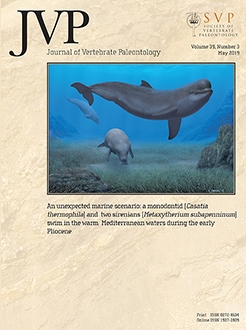Richardoestesia is an enigmatic theropod dinosaur originally described on the basis of a pair of dentaries (holotype of R. gilmoreiCurrie et al., 1990) and isolated distinctive teeth, which are abundant in the Upper Cretaceous of North America. Richardoestesia asiatica (Nesov, 1995) is represented by numerous isolated teeth from the Upper Cretaceous Khodzhakul, Bissekty, and Aitym formations of Uzbekistan. Richardoestesia asiatica shows the typical features of the genus, including small mesial and distal denticles (on average 28.4 and 34.5 denticles per 5 mm, respectively), rectangular or knob-like denticles, and an apically convex distal margin of the tooth crown. The sample of R. asiatica has a large proportion of straight teeth (morphotype A) and includes several types of recurved teeth related to their position in the jaws (morphotypes B–E). This species differs from R. gilmorei in the presence of straight teeth and fully serrated mesial carinae. Richardoestesia asiatica cannot be distinguished from R. isoscelesSankey, 2001, which we consider a nomen dubium due, in part, to the imperfect nature of its holotype. Discriminant function analysis (DFA) of dental measurements found no distinction between the samples from Khodzhakul and Bissekty formations. In DFA including North American samples, the morphospace of R. asiatica completely overlaps that of the sample from the Lance Formation (Maastrichtian) of Wyoming and only partly overlaps with that of the sample from the Milk River Formation (Santonian) of Alberta.
How to translate text using browser tools
24 October 2019
Morphometric Analysis of the Teeth and Taxonomy of the Enigmatic Theropod Richardoestesia from the Upper Cretaceous of Uzbekistan
Alexander Averianov,
Hans-Dieter Sues
ACCESS THE FULL ARTICLE






